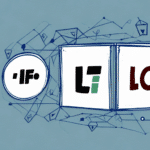What Is FIFO? An Overview of the First-In, First-Out Inventory Method
Effective inventory management is essential for businesses of all sizes and industries. Among the various inventory management systems, the First-In, First-Out (FIFO) method stands out for its simplicity and effectiveness. FIFO ensures that the oldest inventory items are sold or used first, reducing waste and maintaining product quality. This article delves into the FIFO inventory method, exploring its benefits, implementation strategies, accounting principles, and more.
Understanding the Importance of FIFO in Inventory Management
The FIFO method is pivotal in maintaining optimal stock levels and minimizing waste. By prioritizing the sale or use of older inventory, businesses can prevent products from becoming obsolete or spoiled. This is particularly crucial for industries dealing with perishable goods, such as food and beverages, pharmaceuticals, and electronics.
Implementing FIFO aids in accurate inventory cost tracking, which is vital for financial reporting and profitability. According to a Investopedia report, FIFO is widely adopted due to its straightforward approach to inventory valuation and cost of goods sold (COGS) calculation.
The Benefits of Using FIFO in Your Business
Adopting the FIFO method offers numerous advantages:
- Reduces Obsolescence and Spoilage: Ensures that older inventory is utilized before it becomes outdated or expires.
- Accurate Cost Tracking: Facilitates precise calculation of inventory costs, enhancing profitability analysis.
- Improved Supplier Relationships: Minimizes the need to return expired or outdated products, fostering trust with suppliers.
- Tax Advantages: In certain regions, FIFO can lead to lower tax liabilities by using the cost of older, often cheaper inventory for COGS.
- Enhanced Customer Satisfaction: Guarantees that customers receive fresher products, thereby increasing repeat business.
These benefits collectively contribute to more efficient inventory management and can significantly impact a company's bottom line.
Implementing FIFO in Your Inventory System
Successfully implementing FIFO requires a systematic approach:
- Create a FIFO Inventory Record: Maintain detailed records of inventory acquisition dates, unit costs, and sale or usage dates.
- Invest in Inventory Management Software: Utilize software that supports FIFO tracking and automates inventory updates.
- Employee Training: Educate staff on FIFO procedures, including how to restock shelves and manage orders.
- Labeling and Organization: Clearly label products with acquisition dates and organize storage so that older items are easily accessible.
- Regular Audits: Conduct periodic inventory audits to ensure that FIFO practices are consistently followed.
Proper implementation of FIFO can lead to reduced waste, increased efficiency, and better financial outcomes.
Comparing FIFO and LIFO Inventory Methods
FIFO (First-In, First-Out) and LIFO (Last-In, First-Out) are two prevalent inventory management strategies, each with its own set of advantages and drawbacks.
- FIFO: Prioritizes using the oldest inventory first. It's beneficial for tracking inventory costs accurately and reducing the risk of obsolescence.
- LIFO: Focuses on using the most recently acquired inventory first. During times of inflation, LIFO can result in higher COGS, potentially reducing taxable income.
While FIFO is generally preferred for its alignment with actual inventory flow and financial reporting standards, LIFO may be advantageous in specific economic conditions. However, it's important to note that LIFO is not permitted under International Financial Reporting Standards (IFRS), limiting its applicability in global contexts.
For a deeper comparison, refer to the AccountingTools comparison of FIFO and LIFO.
Accounting Principles Behind FIFO
The FIFO method adheres to the Generally Accepted Accounting Principles (GAAP) and International Financial Reporting Standards (IFRS). It requires businesses to:
- Match Revenue and Expenses: Ensure that the cost of goods sold correlates with the revenue generated in the same financial period.
- Accurate Asset Valuation: Report remaining inventory at the cost of the most recently acquired items, reflecting current market conditions.
By following FIFO, companies can present a more accurate financial position, especially in industries where inventory costs fluctuate.
For more information on FIFO accounting, visit the Investopedia FIFO overview.
Industries That Commonly Use the FIFO Method
FIFO is particularly beneficial for industries where goods are perishable or subject to rapid obsolescence:
- Food and Beverage: Ensures the sale of fresher products, reducing spoilage and waste.
- Pharmaceuticals: Vital for managing products with strict expiration dates.
- Electronics: Helps in managing inventory that can quickly become outdated due to technological advancements.
- Retail: Effective for businesses with large inventories to prevent stockouts and write-offs.
- Automotive: Assists in managing complex supply chains with numerous parts and components.
These industries benefit from FIFO's ability to maintain product quality and manage inventory costs effectively.
Calculating Inventory Costs with FIFO
Using FIFO for inventory cost calculation involves the following steps:
- Identify the Cost of the Oldest Inventory: Determine the unit cost of the earliest inventory items.
- Calculate Cost of Goods Sold (COGS): Multiply the number of units sold by the unit cost of the oldest inventory items.
- Determine Ending Inventory: Multiply the number of remaining units by their respective unit costs.
Regularly calculating inventory costs using FIFO ensures accurate financial reporting and aids in making informed pricing and purchasing decisions.
For a practical guide on FIFO calculations, refer to the AccountingCoach FIFO explanation.
Optimizing Your FIFO System
Maximizing the efficiency of your FIFO system involves several strategies:
- Invest in Reliable Inventory Software: Automates FIFO tracking and reduces manual errors.
- Train Employees Thoroughly: Ensure that all staff understand and consistently apply FIFO procedures.
- Conduct Regular Audits: Periodically review inventory to verify compliance with FIFO practices.
- Enhance Supply Chain Efficiency: Streamline procurement and logistics to support timely inventory turnover.
- Negotiate Favorable Supplier Terms: Establish agreements that support effective FIFO implementation, such as consistent delivery schedules.
Implementing these optimization techniques can lead to smoother operations, reduced costs, and improved inventory accuracy.
For additional optimization tips, consult resources like the Chron Small Business guide.
Case Study: Nestlé’s Successful Implementation of FIFO
Nestlé, a global leader in the food and beverage industry, effectively implemented the FIFO method to enhance its inventory management. By adopting FIFO, Nestlé achieved the following outcomes:
- Waste Reduction: Decreased waste by 10%, resulting in significant cost savings.
- Increased Profitability: Enhanced inventory turnover led to better profitability margins.
- Consistent Product Quality: Maintained product freshness by ensuring the oldest inventory was utilized first.
Nestlé's commitment to training employees and optimizing its supply chain played a crucial role in the successful adoption of FIFO. The implementation not only streamlined operations but also reinforced Nestlé's reputation for quality and reliability in the market.
This case study exemplifies how large-scale businesses can benefit from strategic inventory management practices like FIFO.
The Potential Drawbacks of Using the FIFO Method
Despite its numerous benefits, the FIFO method has certain limitations:
- Higher Tax Liabilities: In periods of rising prices, FIFO may result in higher profits, leading to increased tax obligations.
- Inventory Cost Inflation: FIFO can inflate the value of ending inventory on the balance sheet, potentially misrepresenting the company's true asset value.
- Unsuitability for Low Turnover: Businesses with slow-moving inventory may find FIFO less effective, as older stock remains unsold for extended periods.
It's essential for businesses to assess these potential drawbacks in the context of their specific operations and financial strategies before adopting FIFO.
For a comprehensive analysis of FIFO's limitations, visit the AccountingTools FIFO overview.
Conclusion
The First-In, First-Out (FIFO) method is a robust inventory management strategy that offers significant advantages in cost tracking, waste reduction, and profitability enhancement. By ensuring that the oldest inventory is utilized first, businesses can maintain product quality, optimize supply chains, and build stronger relationships with suppliers.
Implementing FIFO involves meticulous record-keeping, employee training, and the use of effective inventory management software. While FIFO is highly beneficial for industries dealing with perishable or rapidly obsolescing goods, businesses must also consider its potential drawbacks, such as higher tax liabilities and inventory cost inflation.
Ultimately, FIFO is a valuable tool for businesses aiming to streamline their inventory processes and achieve greater financial accuracy. However, it is crucial for each business to evaluate its unique inventory needs and operational dynamics to determine whether FIFO is the most suitable inventory management method.
For further reading on inventory management strategies, explore resources from the Investopedia inventory section and the AccountingCoach inventory methods guidance.




















